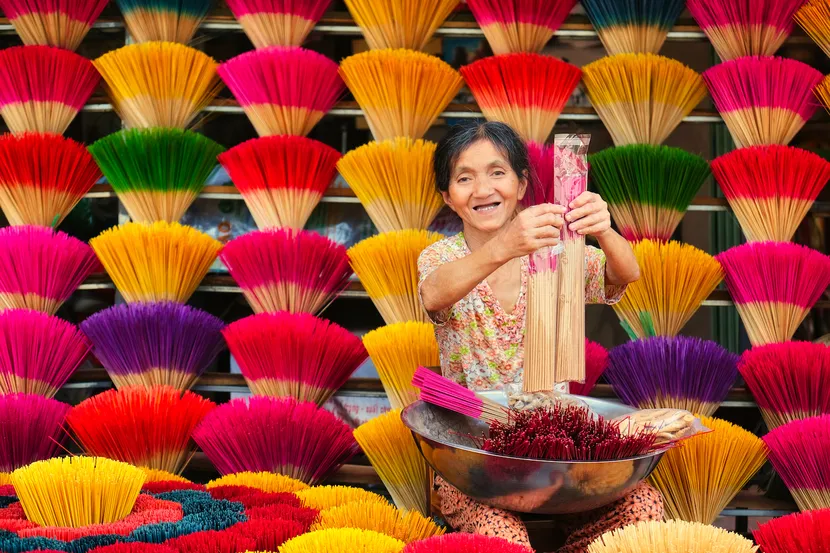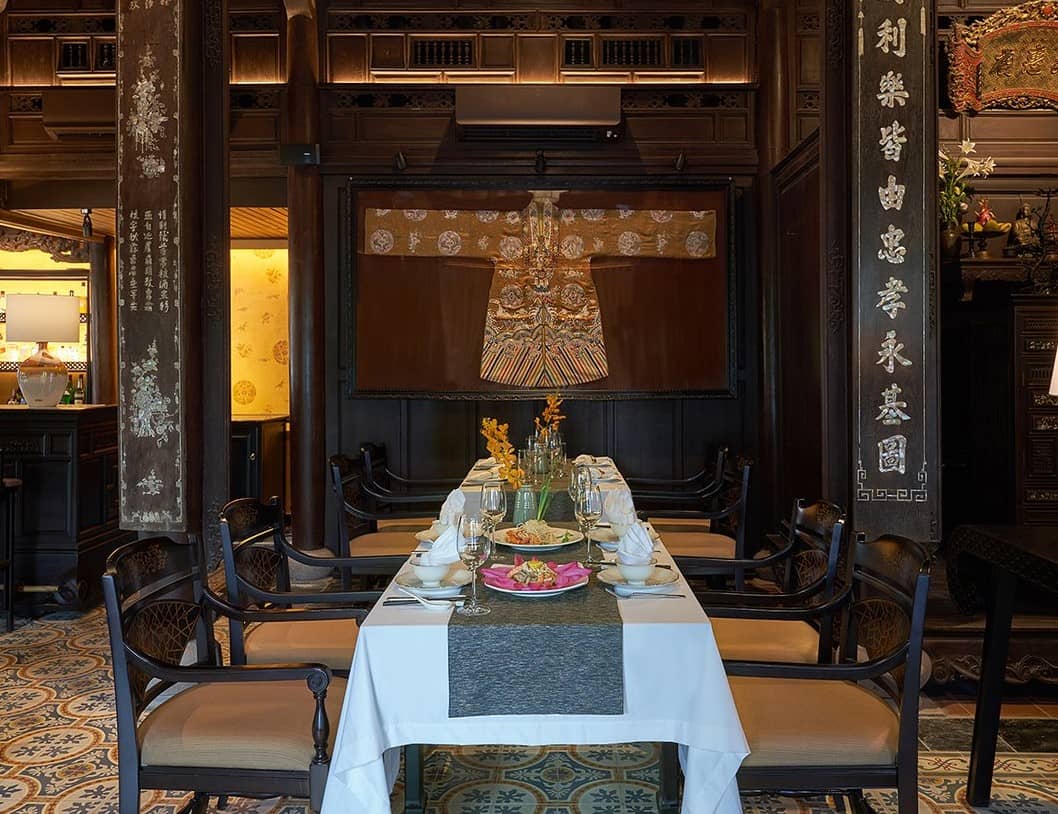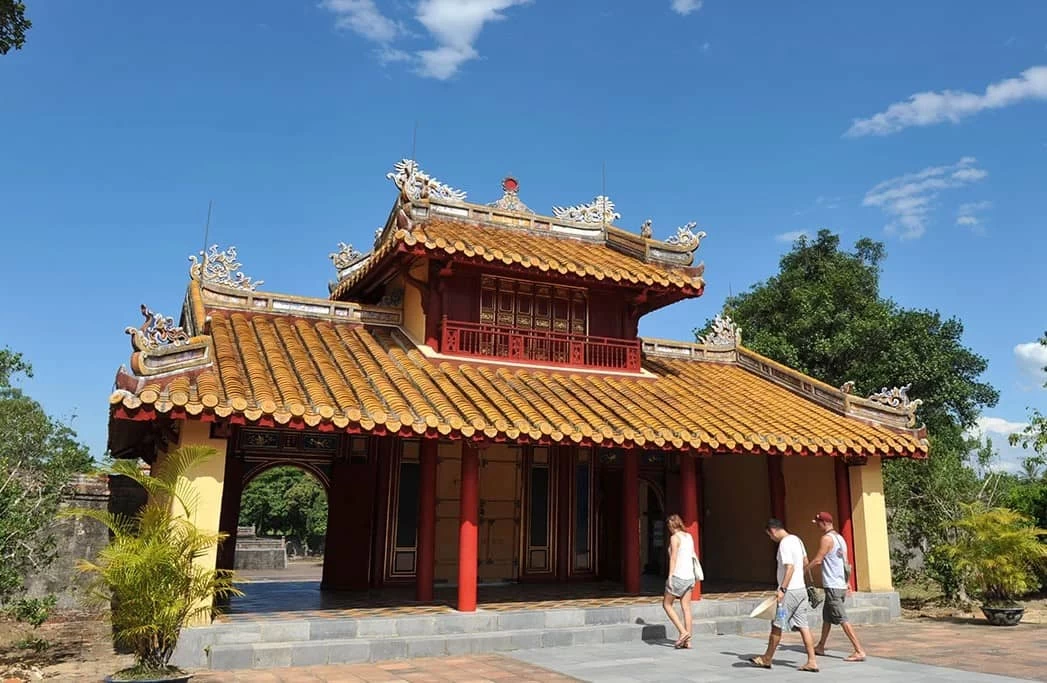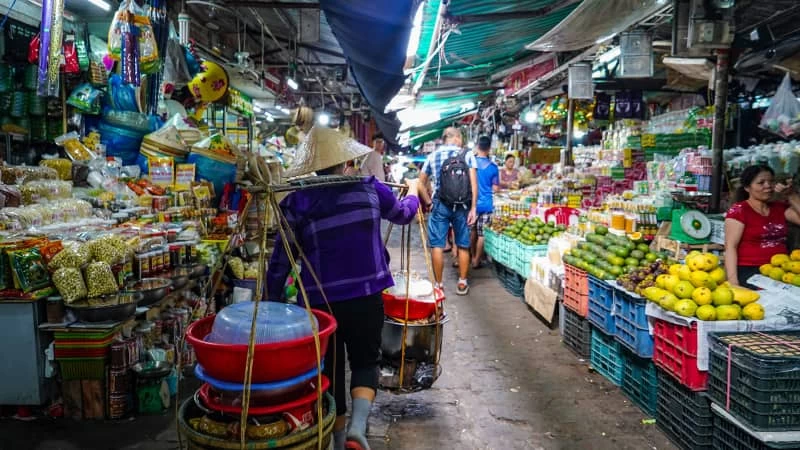
Discover the best street food in Hue.
Explore the vibrant world of Hue street food with Ula Travel’s guide to the must-try dishes, best local spots, and cultural experiences. From savory Water Fern Cake to rich Hue Beef Noodle Soup, uncover the flavors that make Hue a culinary gem of Vietnam. Ideal for international tourists seeking authentic food adventures in Vietnam’s former imperial capital.
I. Introduction to Hue Street Food
Hue, known not only for its historical beauty and heritage but also as the culinary capital of Vietnam, was once the imperial city of a feudal dynasty. This city retains ancient architectural structures while inheriting and developing a distinctive and refined cuisine. Hue’s culinary scene, especially its street food, embodies a unique fusion of royal cuisine and local fare, creating a distinct identity that visitors find hard to encounter elsewhere.

Hue street food is famous for its sophistication and appeal.
Hue street food is not only abundant in variety but also unique in its preparation and presentation. From famous dishes like Hue beef noodle soup (bún bò Huế) with its rich flavor to delicate and charming Water fern cake (bánh bèo) and the sweet Hue-style desserts (chè Huế), each dish contains the essence of the local culture and the spirit of its people. Hue cuisine is not merely about eating; it is also a way for visitors to gain a deeper understanding of the life, customs, and traditions of this region.
II. Why You Should Experience Hue Street Food?
1. Cultural Experience
For many international tourists, cuisine serves as an open door to explore the culture of a local area. Hue’s street food is a clear testament to the strong connection between food and culture. From the intricate cooking methods to the ways of enjoying the dishes, each meal reflects the simple yet deeply traditional lifestyle of the people of Hue. Sitting at a small roadside stall, enjoying hot dishes, and listening to the vendor’s stories provide tourists with deeper insights into local life.
2. Diversity and Richness of Dishes
One of the main reasons international tourists should try Hue street food is the diversity of the dishes. Not only is there Hue beef noodle soup (bún bò Huế), but also a wide variety of other dishes such as water fern cake (bánh bèo), steamed rice cake (bánh nậm), grilled pork skewers (nem lụi), and sweet desserts (chè). Each dish has its own unique flavor, allowing tourists to explore not just one but a range of culinary experiences. This is particularly appealing to those who enjoy discovering and learning about new foods.
3. Affordable Prices
Hue street food stands out for its high quality at very reasonable prices. This is a significant advantage for international travelers, especially those on a limited budget. For just a few dollars, visitors can savor a variety of dishes, enjoying a rich culinary experience without worrying about costs.
4. Royal Cuisine Essence
Although many of Hue’s street food dishes originate from royal cuisine, they retain an elegant and refined character while being simplified for everyday life. This is a rare opportunity for international tourists to enjoy dishes once reserved for the aristocracy without having to dine in upscale restaurants.
5. Authentic Traditional Flavors
Hue’s street food is always prepared with fresh ingredients and traditional recipes passed down from generation to generation. These dishes are not influenced by modern trends or industrialization, ensuring that visitors enjoy authentic flavors that are rich in Vietnamese identity without being “altered” for mass tourism needs.
Read more: Hue Cuisine – Experience Authentic Flavors
III. Top 10 Must-Try Street Foods in Hue
1. Hue Beef Noodle Soup

Hue Beef Noodle Soup
Hue Beef Noodle Soup is one of the most famous dishes not only in Hue but also in Vietnamese cuisine. This dish stands out with its rich broth, sweetened from simmered bones combined with the fragrant aroma of lemongrass and a hint of spiciness from chili.
Hue Beef Noodle Soup features thick, chewy noodles and is typically served with rare beef, pork knuckle, and crab paste. Additionally, each bowl comes with fresh herbs such as bean sprouts, Thai basil, and lettuce to enhance the dish’s variety.
Recommended Addresses:
- Bún Bò Mệ Kéo –20 Bach Dang, Group 19, Hue.
- Bún Bò Huế O Cương Chú Điệp – 6 Tran Thuc Nhan, Hue.
Price: From 30,000 – 50,000 VND (approximately $1.50 – $2.00).
Start your journey now: Da Nang to Hue – Unexpected Trip You’ll Love
2. Water Fern Cake (Bánh Bèo)

Water Fern Cake
Water fern cake is a characteristic dish of Hue, consisting of small, thin, and soft rice cakes. The cakes are typically served on small plates (bowls) and topped with crushed dried shrimp, crispy pork skin, and fragrant fried onions. When eating, diners drizzle a bit of sweet fish sauce on top to enhance the flavor. This dish is very easy to eat and comes in a compact size, making it suitable for light meals or snacks.
Recommended Addresses:
- Bánh Bèo Bà Đỏ – 8 Nguyen Binh Khiem, Phu Hiep, Hue.
- Bánh Bèo O Lé – 104/17/9 Kim Long, Hue.
Price: From 10,000 – 20,000 VND (approximately $0.50 – $1.00) per plate.
Click here: Central Vietnam Wonders Tour
3. Hue Crispy Pancake (Bánh Khoái)

Hue Crispy Pancake
Hue Crispy Pancake is a delicious dish that you must try when visiting Hue. This is the “bánh xèo” version from Hue, but it is smaller in size and fried to a golden crisp. The filling typically includes shrimp, pork, and bean sprouts, wrapped in a crunchy shell. When served, bánh khoái is dipped in a special sauce made from roasted peanuts, pig liver, and sesame. The rich flavor of the dipping sauce blends with the pancake, creating an enjoyable culinary experience.
Recommended Addresses:
- Bánh Khoái Lạc Thiện – 6 Dinh Tien Hoang, Hue.
- Bánh Khoái Hồng Mai – 110 Dinh Tien Hoang, Hue.
Price: From 20,000 to 35,000 VND (approximately $1.00 to $1.50) for a serving.
Read more: Discover Central Vietnam Tour in 6 Days
4. Vietnamese pork lemongrass skewer (Nem Lụi)

Vietnamese pork lemongrass skewer
Vietnamese pork lemongrass skewer is a signature street food from Hue, made from minced pork mixed with spices like onion, garlic, and fish sauce, then wrapped around a lemongrass stalk and grilled over hot coals. As it cooks, the lemongrass releases an enticing aroma, giving the nem lụi a very special flavor. This dish is typically served with rice paper, fresh herbs such as lettuce, cucumber, fragrant herbs, and especially a rich dipping sauce made from pig liver, crushed peanuts, and fish sauce.
Recommended Addresses:
- Quán Hạnh – 11 Pho Duc Chinh, Hue City.
- Nem Lụi Bà Tý – 81 Dao Duy Tu, Hue.
Price: From 20,000 to 30,000 VND (approximately $0.80 to $1.20) per serving.
Do not miss: Best things to do in Hue
5. Flat Steamed Rice Dumplings (Bánh Nậm)

Flat Steamed Rice Dumplings
Flat Steamed Rice Dumplings is a thin, soft cake made from rice flour and wrapped in banana leaves. The filling includes minced shrimp and pork, seasoned just right. After being wrapped in banana leaves, the dumplings are steamed until cooked.
Flat Steamed Rice Dumplings is often served with sweet and sour fish sauce, creating a harmonious combination of the rich flavor of the dumpling, the fragrance of the banana leaf, and the sweet and salty dipping sauce. Although this dish may appear simple, it encapsulates the essence of Hue cuisine.
Recommended Addresses:
- Bà Đỏ – 8 Nguyen Binh Khiem, Hue City.
- Mệ Lé – 104/17/9 Kim Long, Hue City.
Price: Approximately 10,000–15,000 VND (approximately $0.40–$0.60) per serving.
More details: Best Day Trip from Hue to Phong Nha for Your Vacation
6. Hue Sweet Soup

Hue Sweet Soup
Hue Sweet Soup is an appealing dessert with various types for visitors to choose from, each with its own unique flavor and ingredients. It is typically made from ingredients such as mung beans, red beans, taro, lotus seeds, shredded coconut, jelly, and coconut milk.
Some famous types of Hue Sweet Soup include corn sweet soup, lotus seed sweet soup, mixed sweet soup, and glutinous rice balls in syrup. The sweet and refreshing taste of Hue Sweet Soup is a great choice to end a meal or to quench your thirst on hot days.
Suggested addresses:
- Chè Hẻm – 1 Kiet 29 Hung Vuong, Hue City.
- Chè Ngọc Hiền – 65 Tran Hung Dao, Hue City.
Price: From 7,000–15,000 VND/cup (approximately 0.30–0.60 USD)
7. Rice Dumpling Cake (Bánh Bột Lọc)

Rice Dumpling Cake
Rice dumpling cake is one of the most famous specialty dishes of Hue, featuring a translucent, smooth, and chewy skin made from tapioca flour. Inside, it is filled with a mixture of shrimp and lightly sweetened pork, wrapped in banana or dong leaves, then steamed until cooked.
When served, bánh bột lọc is often dipped in a sweet and sour fish sauce, creating an unforgettable flavor. This dish is small, easy to eat, and commonly sold at street stalls, contributing to the unique character of Hue’s street food.
Suggested addresses:
- Mệ Lé: 104/17/9 Kim Long, Hue City.
- Hàng Me: 12 Vo Thi Sau, Hue City.
Price: About 15,000–30,000 VND for a portion of 5 to 10 cakes.
8. Clam Rice

Clam Rice
Clam Rice is a popular street food dish that strongly represents Hue cuisine. This rice dish is made from cold rice mixed with stir-fried clams and served with fresh vegetables such as banana blossom, watercress, and herbs. Additionally, it is topped with roasted peanuts, crispy pork skin, and fried onions, adding a crunchy and rich flavor to the dish.
What makes clam rice special is the broth, which is seasoned carefully, featuring the natural sweetness of the clams. Although simple, this dish embodies the sophistication and delicacy of Hue’s culinary art.
Suggested addresses:
- Hoa Đông – 64 Kiet 7 Ung Binh, Vy Da, Hue City.
- Đập Đá – 1 Han Mac Tu, Vy Da, Hue City.
Reference price: About 10,000–20,000 VND for a portion of clam rice.
Read more: Best Restaurants in Hue
9. Vietnamese Thick Noodle Soup (Bánh Canh Nam Phổ)

Vietnamese Thick Noodle Soup
Vietnamese thick noodle soup is a distinctive noodle soup from Nam Phổ village, a small village near Hue City. The noodles are thicker than typical bánh canh and are made from rice flour and tapioca flour, giving them a characteristic chewy texture. The broth is made from shrimp, pork, and crab roe, featuring an attractive orange-red color.
The dish is often served with crab cakes and minced shrimp. A standout feature of bánh canh Nam Phổ is its thick broth, rich in flavor, with hints of the sea combined with spices that reflect Hue’s unique culinary style, allowing diners to easily appreciate the sophistication of the region’s food.
Suggested addresses:
- Bánh Canh O Thu: 374 Chi Lang, Hue City.
- Quán Bánh Canh Nam Phổ: 16 Pham Hong Thai, Hue City.
Reference price: About 15,000–30,000 VND for a bowl.
10. Hue Fermented Pork Skin (Tré Huế)

Hue Fermented Pork Skin
Hue Fermented Pork Skin is a traditional dish made from shredded pork mixed with roasted rice powder and various spices like garlic, galangal, and sesame seeds. The mixture is fermented for a certain period to achieve a natural sour flavor, providing a chewy and crunchy texture that is quite unique.
Hue Fermented Pork Skin resembles a large spring roll, wrapped in banana leaves. This dish is often enjoyed as a snack during meals or while strolling through the streets of Hue. The mild sourness, combined with the fragrant galangal and roasted rice powder, makes tré a beloved street food item.
Suggested addresses:
- Tré Ông Phúc: 4 Kiet 98 Dinh Tien Hoang, Hue City.
- Tré Đông Ba: Dong Ba Market, Phu Hoa, Hue City.
Reference price: About 20,000–50,000 VND for one roll, depending on size.
IV. Where to Find the Best Street Food in Hue
1. Nguyen Dinh Chieu Street
Nguyen Dinh Chieu Street is an ideal location for visitors to explore the street food of Hue. Located right along the banks of the Perfume River, this street not only features a variety of stalls but also offers a beautiful atmosphere that harmonizes nature and culture.

Nguyen Dinh Chieu Street
The atmosphere on Nguyen Dinh Chieu Street in the evening is particularly bustling as crowds flock in from all directions. This is when the aromas of food fill the air, combined with the sparkling lights of the Perfume River, creating an incredibly romantic and unforgettable dining experience.
Sitting down to enjoy crispy banh khoai or savoring some skewers of nem lui by the picturesque river provides international visitors with a relaxing feeling, immersing them in the daily life of the people of Hue.
2. Dong Ba Market
Dong Ba Market is an ideal stop for those wanting to explore the richness of Hue’s cuisine in a space steeped in local character. Here, visitors can not only enjoy delicious dishes but also witness the cooking process right on site.

Dong Ba Market
The calls for orders, the sizzling sounds of oil, and the bustling atmosphere of the market create a vibrant scene, offering tourists an authentic experience of Hue’s street food culture. Whether you visit the market in the morning or afternoon, you can always easily find hot, flavorful dishes.
3. Gia Hoi Old Quarter
The Gia Hoi Old Quarter has an ancient and tranquil beauty, making it an ideal place for visitors to learn about Hue’s culinary culture in a rustic style. The street food here mainly caters to the local population, yet it is precisely this uniqueness that attracts international visitors eager to try less common dishes. The narrow alleys of the Gia Hoi Old Quarter often have vendors selling banh bot loc, banh canh Nam Pho, and other traditional Hue dishes at very affordable prices.
V. How to Enjoy Hue Street Food Like a Local
1. How to Sit at the Food Stall
In Hue, many street food stalls use small, simple tables and chairs, often just enough for a few people to sit together. International tourists may find this seating style unusual, but it is the way locals create a warm and friendly atmosphere.
When you arrive at the food stalls, you can choose a seat and sit anywhere without needing to wait for staff to arrange it. The comfort and open space of the sidewalk eateries make it easy for visitors to mingle and chat with locals or even other diners.
2. How to Order Food
Ordering food at Hue’s street stalls can be an enjoyable experience for tourists. Many stalls do not have printed menus; instead, you will see the dishes displayed right in front of you or on a handwritten board. You can point to the dish you want, or if you want to challenge yourself, learn a few simple Vietnamese phrases. Vendors are usually friendly and willing to help if you have difficulty making a choice. Additionally, using translation apps like Google Translate can be helpful for communication.
In conclusion, Hue Street Food is a journey into the heart of Vietnam’s rich culinary heritage. From flavorful dishes like Bun Bo Hue to delicate Banh Beo, each bite reflects the city’s royal roots and vibrant street culture. Exploring these local delights offers travelers not just a taste of authentic flavors but also a deeper connection to Hue’s history and traditions. Don’t miss the chance to savor this unique aspect of Hue on your visit!
See more: Hue Travel Tips


























